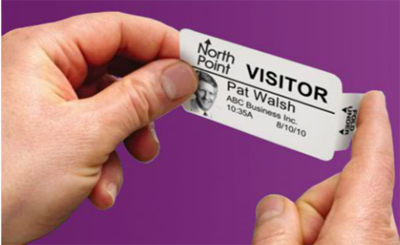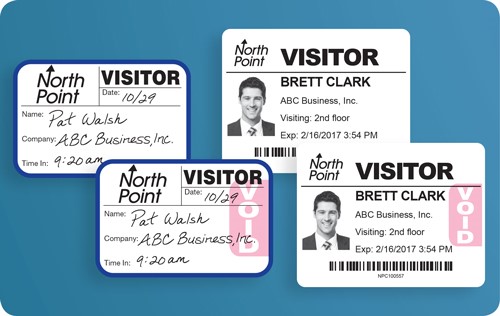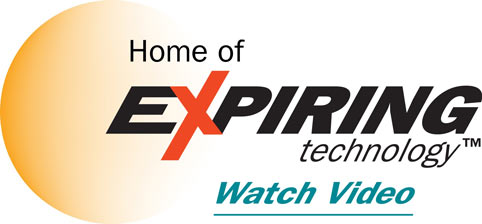Blog
7 inexpensive tools to increase office security
by Paul Kazlauskas

High-tech security solutions seem to always get the most buzz. The most sophisticated, state-of-the-art, modern solution is what gets attention from the media and people at large. The “newest and greatest” security systems, cameras, and access control systems continually try to sell you on all the bells and whistles they offer.
But what if you don’t need (and can’t afford) the latest and greatest high technology security solution?
The good news is there are numerous simple, inexpensive tools you can implement right now to help improve the security of your office. See our seven affordable security suggestions below. The first five are about managing visitors, the sixth is about door locks, and the seventh is about computer security.
1) Install an Electronic Visitor Management System
An Electronic Visitor Management System (VMS) is used to sign in and track visitors who come to a facility. A VMS is a great way to document who comes into your building, is an efficient way to manage visitors, and provides reporting and data analysis of visitor activity. As the tool has evolved over the years, the cost for purchasing a visitor management system has declined. This affordable security tool also possibly saves the need for hiring a receptionist and allows your facility to “Go Green” by eliminating the use of paper log books.
2) Use time-expiring visitor badges that change color
Time-expiring visitor badges have the capacity to “change color overnight.” In other words, they may be “valid today,” but they will be “void tomorrow.” The word “void,” literally, is what appears on the expiring badges over time to signal that they may no longer be used as legitimate forms of visitor identification. These special visitor passes are affordable, tamper-proof, and provide a clear visual alert that the wearer is unauthorized.
3) If you can’t afford time-expiring visitor badges, use a color-coded badge system
The visitor badge color, when incorporated in the facility’s security strategy, can communicate much more information than the fact the person wearing it is a visitor. Security can be increased by color-coding badges:
- By day of the week (each day of the week is issued a different color)
- By the type of visitor (vendors, contractors, and general visitors get different colored visitor passes)
- So each floor has its own color (a green visitor badge for the first floor, red visitor badge for the second floor, etc.)
4) Add a Visitor Agreement/Limited Liability Statement on the visitor badge
This security practice allows the organization the opportunity to clearly state what is expected of the visitor while on their property. This statement could include everything from protecting trade secrets within the facility to declaring to what extent the organization is liable for any injury while on the grounds. The organization has its bases covered if they require visitors to agree to this statement as they sign in electronically while entering the facility.
5) Hang signs around the office to help direct visitors
If a visitor arrives at your office for the first time, they may not intuitively know where to go. To help prevent them getting lost or from walking into an area they should not be in, place signage around the office directing your visitors as to what is expected of them. Hang a brightly colored sign (similar to a stop sign) on the entrance and exit of the office to remind visitors to check in upon arriving and check out before leaving. Have some directions visible on the front desk that explains the need for visitor management and what is expected of them while visiting the facility.
6) Install deadbolt locks
It is one of the strongest and most common locking devices used on outside doors. There are many options available, so it would be prudent to do some research before purchasing one. Click here for more info.
7) All employees should have anti-virus protection on PCs
Anti-virus programs should be installed on EVERY PC in the office, no exceptions. It’s extremely inexpensive and yet is still one of the shrewdest investments an office can make to combat cyber threats. There are many viruses, malware, and spyware that can compromise sensitive company data.
What other ways can an office increase their security without spending a ton of money? Please feel free to add your thoughts in the “Comments” section below.
Want the latest, best security practices delivered straight to your inbox? Click the "Subscribe to the Blog" button (on the left side navigation).
Our visitor badges “VOID” overnight to prevent reuse. 
See them for yourself — request free samples!
Posted on 3/1/2017



 Paul Kazlauskas
Paul Kazlauskas
 Andrew Jones
Andrew Jones